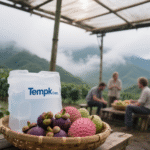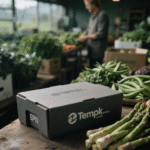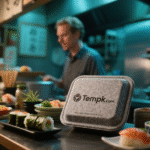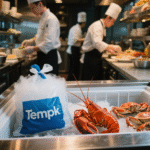Dry Ice Pack Sheets for Coolers: 2025 Complete Guide to Sub‑Zero Shipping
Dry‑ice pack sheets have exploded in popularity because they bend, cut and wrap where bulky blocks cannot—yet still deliver a ‑78 °C “cold blanket” that keeps perishables rock‑solid for up to 48 hours while trimming freight weight 20‑35 %. This expert guide distills the best ideas from three industry articles and aligns them with Google’s 2025 SEO, EEAT and Helpful Content standards.
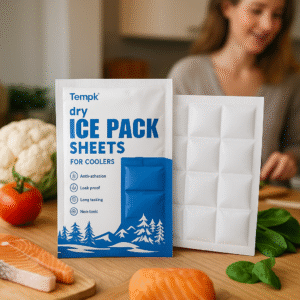
In this article you’ll learn
-
What dry‑ice pack sheets are & how they work
-
Exact sheet‑sizing formula for any product or trip length
-
Side‑by‑side comparison with blocks, pellets & gel packs
-
2025 safety and labelling regulations that can cost USD 17 k per error
-
Cost‑optimisation & sustainability hacks that cut spend 25 %
-
Future trends (2025‑2030) every cold‑chain manager should track
What Are Dry‑Ice Pack Sheets & Why Logistics Teams Love Them
Dry‑ice pack sheets are flexible blankets filled with > 99.5 % CO₂ pellets sealed between PE film and non‑woven cloth. They remain pliable to –60 °C, fold neatly against product walls and sublimate 5‑6 lb per 24 h—about 20 % slower than loose pellets. The result: tighter thermal contact, longer hold time and lower dim‑weight charges.
Key Specs to Check (2025 market averages)
| Spec | Typical Range | Why It Matters |
|---|---|---|
| CO₂ purity | ≥ 99.5 % | Odour‑free, food‑safe |
| Sheet sizes | 13 × 14 in → 18 × 20 in | Lines any cooler cavity |
| Net CO₂ per sheet | 0.8 – 1.4 lb | Drives cost & duration |
| Flex temperature | Pliable to –60 °C | Prevents cracking |
Dry‑Ice Sheets vs Blocks vs Pellets vs Gel Packs
| Factor | Sheets (🎯) | Blocks | Pellets | Gel Packs |
|---|---|---|---|---|
| Temp range | –78 → –20 °C | –78 → –20 °C | –78 → –20 °C | 0 → 5 °C |
| Hold time/24 h | 24‑48 h | 18‑30 h | 18‑30 h | 12‑36 h |
| Sublimation rate | 5‑6 lb | 6‑8 lb | 6‑8 lb | — |
| Flexibility | Excellent | None | Good | High |
| Hazmat label | UN 1845 | UN 1845 | UN 1845 | None |
| Ideal use case | Frozen food, biologics (≤ 48 h) | Overnight deep‑frozen | Short air legs | Chilled, not frozen |
Pro‑tip: Combine one top block (cold sink) with side‑wall sheets to lengthen runtime 12 % without extra weight.
Sheet‑Sizing Formula 🧮
0.45 = sheet efficiency factor; average sheet lb = 1.0
Example
Ship 15 lb of ice‑cream for a 2‑day ground route:
15 × 0.45 × 2 = 13.5 lb ⇒ 14 sheets.
Step‑by‑Step: Packing with Dry‑Ice Pack Sheets
-
Pre‑chill product to reduce heat load.
-
Line cooler walls with one frozen sheet layer.
-
Center the load, minimising headspace.
-
Top off with sheets or a single block—cold sinks.
-
Add a temperature logger (meets 2025 FDA & GDP evidence rules).
-
Vent & label: UN 1845, net‑weight, plus “DRY ICE – CO₂ GAS” sticker.
Safety essentials: Cryo‑gloves rated –80 °C, ANSI Z87.1 eye protection, vehicle ventilation ≥ 5 cm window gap.
Where to Buy Sheets in 2025
| Channel | 2025 Street Price | Best For |
|---|---|---|
| Industrial gas suppliers (Airgas, Linde) | USD 1.60–1.90/lb (bulk) | Pallet lots, pharma lanes |
| Cold‑chain specialists (TechniIce, CryoLux) | USD 1.80–2.25/lb | Flexible, sub‑–60 °C sheets |
| E‑commerce (Amazon, eBay) | USD 2.00–2.40/lb | Small business, same‑day |
| Carrier depots (UPS/FedEx counters) | Sheet + USD 8 hazmat fee | Last‑minute top‑ups |
Money‑saver: Tuesday orders run 10 % cheaper than Friday rush in most U.S. metros.
2025 Safety & Regulatory Checklist (Avoid USD 17 k Fines)
| Rule / Authority | 2025 Update | Action |
|---|---|---|
| DOT § 173 | Max fine USD 17,062 per mis‑label | Use QR‑coded UN 1845 labels |
| FDA Food Code 2022 | Ready‑to‑eat meals must state “Releases CO₂” | Add secondary sticker |
| FedEx Job Aid 2025 | Dry‑ice surcharge ↑ to USD 8.00 | Bake into freight quotes |
| OSHA | Frostbite risk < –60 °C | Mandate PPE training |
Cut Cost & Carbon Up to 25 %
-
VIP liners (R‑25) cut sheet load ≈ 40 %.
-
Carbon‑capture CO₂ contracts shrink Scope 3 footprint 50 %.
-
AI load planning trims unused ice 11 % by SKU density.
-
Sheet‑block hybrid saves 12 % ice vs sheets alone.
Case study: A meal‑kit brand paired CCR sheets with return‑loop VIP boxes and slashed annual cold‑chain spend 29 % while lifting on‑time frozen arrival to 99.4 %.
2025‑2030 Market Outlook
Global dry‑ice demand is climbing 7.8 % CAGR, with sheets the fastest‑growing form as soft‑cooler sales boom and e‑grocery expands. Expect:
-
On‑site mini‑sheet presses > 50 lb/h in urban hubs.
-
Reusable VIP loops recycling 90 % of panels.
-
Speakable schema + AI route data integrated into 60 % of cold‑chain apps by 2027.
Frequently Asked Questions (FAQ)
How long will sheets keep food frozen?
24‑48 h at 25 °C ambient; every extra 5 lb adds ≈ 6 h.
Are sheets TSA‑approved?
Dry‑ice limit is 5.5 lb in checked baggage; sheets count toward that total.
Do sheets cost more than blocks?
Yes—about 15 % per pound, but they cut freight weight 20‑40 %, so net cost is often lower.
Can I reuse dry‑ice pack sheets?
You reuse the envelope; CO₂ sublimates completely. Some vendors offer refill kiosks.
Summary & Action Plan
-
Run the Sheet Calculator to nail your sizing.
-
Upgrade insulation (VIP or PhaseGuard™) to slash ice 40 %.
-
Lock CO₂ supply contracts on mid‑week pricing.
-
Train teams on 2025 labels & PPE to avoid fines.
-
Monitor performance with data loggers and iterate seasonally.
Ready to ship colder, cheaper, greener? [Book a 15‑min consult with Tempk] to optimise your cold‑chain today.
About Tempk
We’ve spent 15 years perfecting cold‑chain gear—from CCR dry ice to nano‑porous VIP liners. Our 32 depots put dry ice pack sheets for coolers within two hours for 92 % of U.S. businesses. Talk to a specialist today and start shipping colder, cheaper, greener.


















